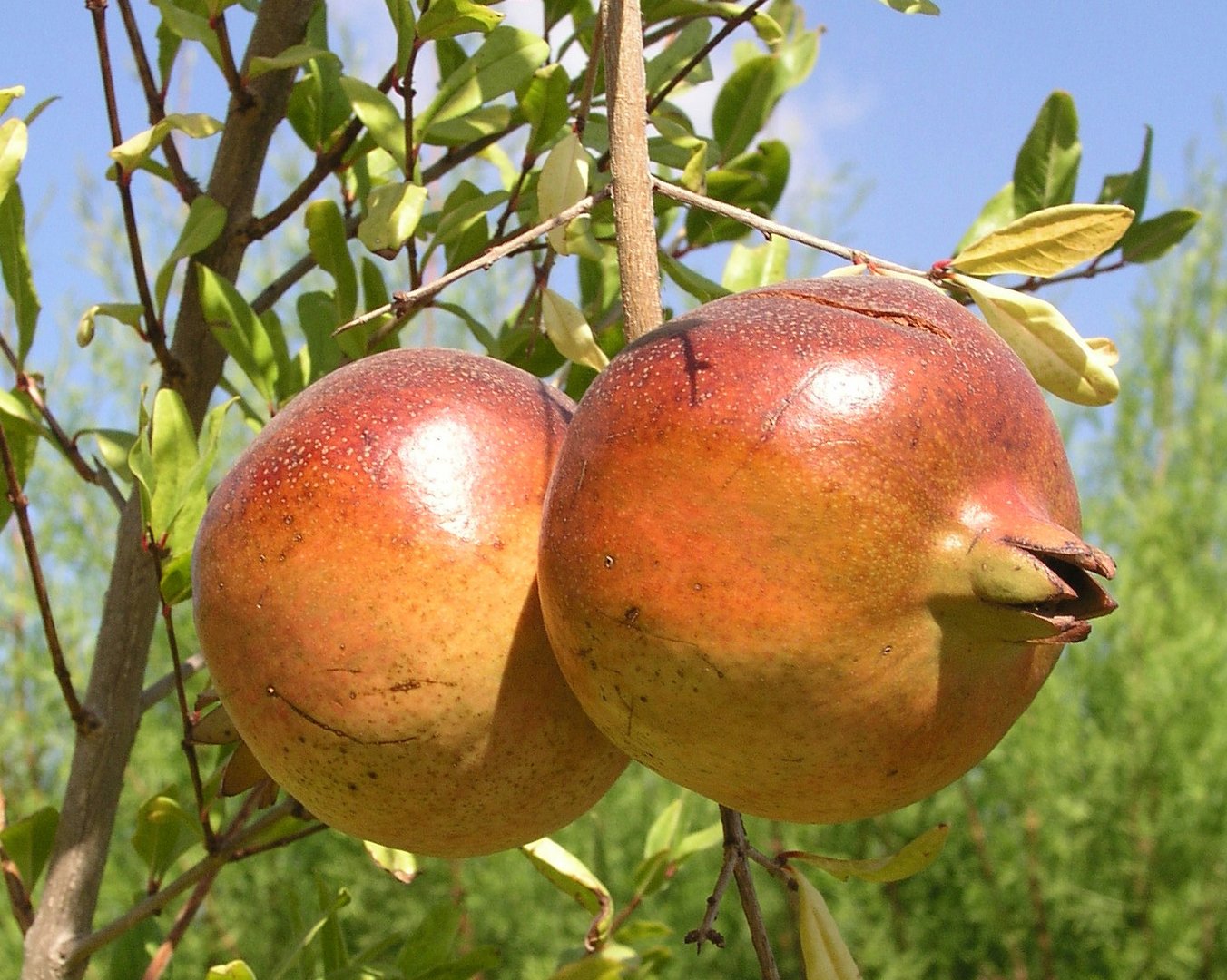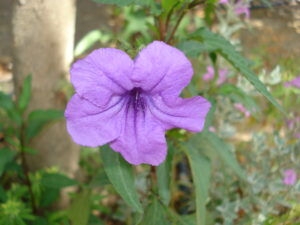November an ideal month to make sure all well before Christmas fever sets in
November is a good month for getting things done in the garden before everyone becomes caught up in the Christmas countdown. The soil temperatures are still kind for planting new shrubs or perennials (those plants that come up every year) and last month’s heavy rain certainly soaked through the earth and helped things along.
The weather is cooler and lots of plants are growing away in the pleasant temperatures. Before there are any more winter rains, loosen the soil with a hoe in the flower beds and between the rows of winter vegetables, so that the rain can soak into the soil and not be wasted by running off everywhere.
Those of us with wells should still be water-wise and not be too generous with the watering and as the temperatures cool, there should be less need to water every day. I don’t suppose that Cyprus is any different to other places for weather variations, except that we know we will have wall-to-wall sunshine for a great deal of the year and some rain during the so-called winter.
Pomegranates are hanging tantalisingly on the trees. They are such frustrating fruits to eat and full of seeds, but they have so many other qualities that you can forgive them that and they certainly make wonderful Christmas decorations! Since our first years here we have little success with these fruits and even if they get to maturity, they can split their skins!
In the orchard, Mespila flowers, smelling like baby talcum, scent the air and any breeze will waft the lovely perfume indoors. Hopefully the bees will be around to pollinate them, ensuring luscious fruits in the spring.
The pecans are ready to pick if the crows have left you any – they know exactly when the outer case starts to open and then they are in their ‘murders’ stripping the trees.
WHAT TO DO IN THE GARDEN THIS MONTH
There is still time to plant bulbs if you haven’t done so yet. November is a good month for putting in tulips, as they flower later than other bulbs. Make sure that the soil is friable where you are going to grow them, as they much prefer sandy soil to loam. If you want to give pots of Paper Whites, Narcissus papyraceus, for Christmas gifts then prepare them about the middle of the month.
A shallow bowl is best and as there isn’t a specific bulb fibre here, you will have to use potting compost, which leaves a lot to desired! I am always getting emails about the sticks and rubbish contained in ‘bought’ composts these days. All I can advise is to tip it out of the bag and pick out all the large pieces of wood and bits of plastic and add in some Perlite and slow-release fertiliser if you can get it.
Homemade compost will probably contain vegetable leavings from the kitchen, dead flowers and leaves from flowering plants. There is much debate about the value of gathering up autumn leaves and composting them. Piles of leaves can be home to little creatures, but some of these could be slugs and snails! Diseased leaves, like roses with black spot, can do more harm than good, as the heat in the bin may not kill off the pathogens, so deal with them some other way if you can.
In Cyprus, we don’t have the abundant leaf fall that many other countries have, and not all the trees drop their leaves at the same time. Dying citrus leaves fall all the time and jacarandas hold on to their fine leaves until springtime. Others like figs, frangipani and strelitzia have very hard leaves, which are difficult to break down, unless they are put through a garden shredder while pine needles are a definite no-no! Nevertheless, leaf mould is a vastly important addition to the structure of our soils. I still shred our private bills and documents as well, which make up the dry layers in my bins.
The ideal composition, whether in a bin or heap, is wet layer, dry layer, wet layer etc. Some complain that heaps can be smelly, but so can animal manure if it is too ‘young’, as the ammonia is still in it and may harm the plants. It all needs time to mature as the compost matures. Others mention the vast amount of weed seeds that come up as a result of goat and sheep manure. Whatever little surprises you get in your flower or vegetable beds can either be left to develop or quickly removed. I do recall that having used some home-made compost in a bed some years ago, I had a fine show of melons and tomatoes later on and all edible!
Cuttings taken at this time generally do well, as it is cooler and the light is still good despite the clocks having gone back. I like to use ‘green cuttings’ for best results, as these fresh green stems will make roots faster than those with woody stems. As you select the cuttings keep them in a plastic bag until you use them. Remove any lower leaves, as this is where the roots will appear.
The freshly cut stem ends can be dipped into a hormone rooting powder or gel, and after removing the growing tip, inserted into a pot of compost using a dibber or even a pencil and then pressed firmly in with your fingers. It’s possible to get several in a pot. Some plants, like pelargoniums, being the most accommodating plants, do not need anything extra. Water gently and then put the pot into a plastic bag and tie the top. Keep them in a light place, but out of the sun. Some cuttings root very quickly. Check the pots after about three or four weeks and when you see white roots appearing through the holes in the bottom of the pot, the cuttings are ready for potting on into bigger pots. Plants sometimes suffer a little set back in growth at this stage, but they will catch up quickly. Their succulent foliage attracts snails, which are on the prowl each evening, so keep a watchful eye out for them.
Plants that survived the great heat of summer are recovering helped by October’s rain and are sending out new growths. Annual seeds like cerinthe are shooting up all over the place. They really are a good early annual to grow and keep popping up years after you planted the first seeds! If you live away from the coast you will find that low night temperatures will kill off these fresh little seedlings during the winter, but there should still be some seeds left in the ground to germinate later and give you a wonderful spring show. Osteospermums germinate freely if you do not take off the dead seed-heads. Mature plants may have lots of woody growth underneath the plants with lots of fibrous roots, so remove them to make way for newer seedlings.
Topiaries may need a trim now. Having the right tools makes the job much easier and old-fashioned sheep-shears are ideal. Only snip into the fresh growth, which is what you want to be rid of. Topiaries, usually grown in huge nurseries in Italy, take ages to mature but can so quickly get out of shape without regular trimming. Some designs take years to create, which is the reason they cost so much. Along the coast line, strelitzia clumps are already showing their amazing flowers, while those of us who lived at higher elevations have to wait until the spring before we can enjoy them.
Plant of the Month Ruellia simplex
Ruellia, members of the Acanthaceae family, are natives of tropical Central and South America, and some Pacific regions too. They are hardy and half-hardy perennial sub-shrubs that can reach from 30 to 90cm in height. They are known as wild petunias and there are as many as 150 species. Those grown here are probably Ruellia simplex. Regarded as a medicinal plant in some places, there are suggestions that some parts might be poisonous, so care should be taken when handling them. The main blooming period is from spring into summer, but many plants will carry the bell-shaped mauve flowers at later times of the year. Other species may have white or pink flowers. They are a principal food source for many butterflies and moths.
Ruellia, despite growing best in warmer climes, can actually survive in much lower temperatures. They grow well in an organic, moist soil, and as they are woodland plants will grow in shaded or partially shaded areas. Their tall stems will be more purple in a sunny spot, rather the deep green that is usual. This tolerant plant can withstand drought conditions in prepared soil.
They self-seed easily and can also be propagated by divisions in the autumn, as well as cuttings. Left to their own devices they can become rampant, so be warned! Never-the-less their welcome purple flowers are a delight in the spring and summer garden.









Click here to change your cookie preferences